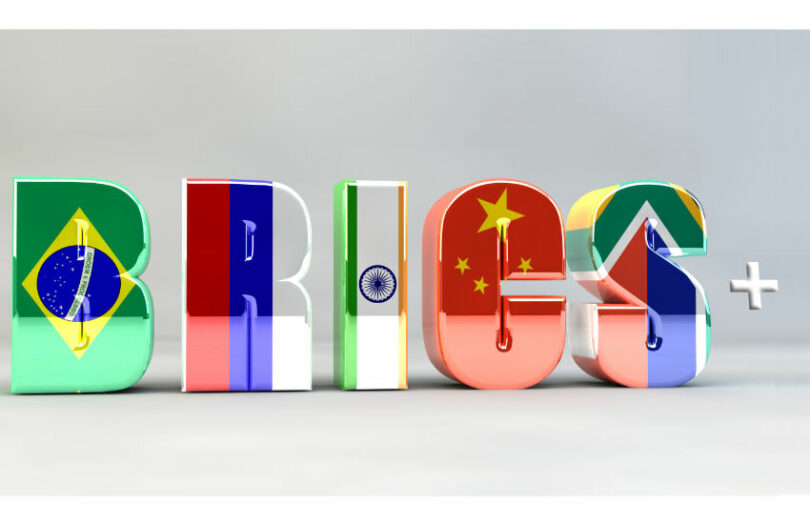Yesterday BRICS finance ministers and central bank governors met in Sao Paulo, Brazil. After the meeting, Russia’s Ministry of Finance said they discussed current payment systems being “used as a weapon of political and economic pressure.” Russia is currently the BRICS Chair. By the end of the year the Ministry and Bank of Russia will produce a report on the options for improving the international financial system. One of the initiatives could be a BRICS Bridge platform, said the Ministry. It didn’t explicitly mention digital currencies.
Specifically, the Ministry said, “We are talking about creating a multilateral digital settlement and payment platform.” However, Sputnik International, one of Russia’s English propaganda networks, went further. It said Finance Minister Anton Siluanov was ready to test digital currencies with China, the Eurasian Economic Union (EAEU) and the Gulf countries.
Another news outlet quoted Siluanov as saying, “The first thing to do is to create a connection to the existing central bank digital currency systems that are already operating in a number of countries. In parallel with this, national financial messaging systems need to be connected.”
A BRICS Bridge shares a similar name with mBridge, the cross border central bank digital currency (cross border CBDC) platform developed by four central banks, including BRICS members China and the UAE.
However, the expansion to ten BRICS members makes decision making somewhat tricky. Before the meeting, a Russian news outlet reported the South African ambassador to Russia, Mzuvukile Jeff Maketuka, as saying that South Africa would prefer an “African payment system that provides opportunities for trade with global partners””. It wants to avoid the dominance of any one currency. While the dollar was explicitly mentioned, within the BRICS, there’s the potential for China’s renminbi to be used as a surrogate.
BRICS and the challenge of currency pairs
At the start of the year BRICS expanded from five to ten countries with the addition of Egypt, Ethiopia, Iran, Saudi Arabia and the UAE. However, reports that Saudi is a member have been disputed.
One of the reasons for the dollar’s dominance is that it’s the most liquid currency, so all currencies have optimal foreign exchange pricing against the dollar. Even if countries don’t want to depend on the dollar, if the alternative costs far more, they will be reluctant to change.
It’s also worth noting that talk of a shared common currency has not entirely disappeared despite the Russian central bank being unenthusiastic. The topic also appeared to be moved to the back burner at the main BRICS Summit last year.
Nonetheless, Russian news agency Interfax quoted the same Finance Minister late last year. He spoke about using a ‘third’ currency for settlement where currency trading pairs have limited activity.
India was given as an example, as Russia exports to India but has limited imports. The Minister suggested that either the Chinese yuan or UAE dirham could be used as an intermediate settlement currency as there is significant Indian trade with those two countries. That would be consistent with a BRICS Bridge project.
However, one of his Interfax quotes may refer to a common BRICS currency – a unit of account. “Next year we will chair the BRICS (he was talking in December), and one of the topics that the Ministry of Finance will announce and work on with our colleagues is the creation of settlements and a unit of account that would allow us to resolve issues of conversion and settlements, so that it would be possible to take into account trade transactions between the BRICS countries (and) not have these problems.”
What does this mean?
Based on these statements, the path is not entirely clear. And it looks like it still needs to be settled.
It could mean that the BRICS Bridge project includes particular logic. If Russia exports to India and doesn’t want to receive rupees, they could agree that India pays in the Chinese renminbi or the UAE dirham. Alternatively, they could have two FX transactions – one from rupee to dirham and another from dirham to rubles. However, two lots of FX can be pricey.
Then there’s the reference to a ‘unit of account’. This typically means the unit that’s used for invoicing. That could mean that the talk of a common currency is still on the cards. But then why did the Finance Minister say ‘unit of account’ rather than a common currency?
Or are they considering a currency measurement basket without creating a common currency? Then each currency would have an exchange rate quoted against the basket.
The IMF has the concept of Special Drawing Rights (SDRs). It’s an asset, not a currency. The general public can’t access SDRs. Only 20 institutions can hold SDRs, including four central banks. But it is used as a unit of account.
For example, say the currency basket is CBRICS. Russia invoices India for oil in CBRICS. They agree to settle in Chinese yuan. How many yuan are paid is determined by the CBRICS-yuan rate.
Meanwhile, the U.S. Federal Reserve recently wrote a paper analyzing the impact of a CBDC on dollar dominance. It concluded that foreign CBDCs would only have a marginal impact. On the other hand, there was some acknowledgment that geopolitical moves might have an effect.






